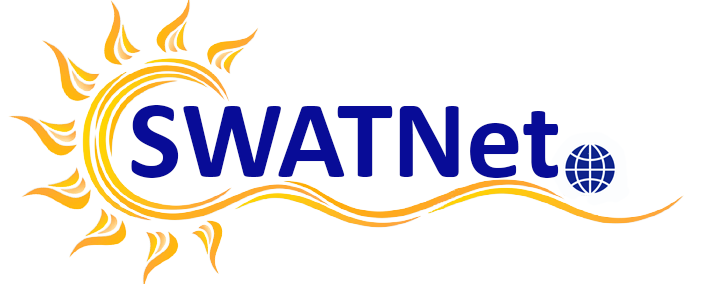
Annual Meeting
Emilia Kilpua
The first Annual Meeting of SWATNet was organized on March 14, 2022 as an online meeting. All project participants and the SWATNet External Advisory Board (EAB) members were invited. We had in total about 40 attendees and 32 participants in Zoom at the peak hour.
The program consisted of ESR’s presentations, and the updates of training, outreach/dissemination and management.
Overview
The first year of SWATNet has been a success despite difficult times:
- All required deliverables submitted on time
- Milestones have been (at least partly) achieved
- Nearly all ESRs have started as planned
- Several meetings organized (Kick-Off meeting, Welcome meeting for students, Annual meeting)
- Several training activities organized according to the plan (School 1, Workshop 1&2, SWATNet seminar-series launched)
- We have been active in outreach (Twitter, ESR’s outreach texts, NewsLetter, Blog)
Science
All ESRs presented their research in 5 minute talks. The first year has been filled with administrational things and it was great to get a reminder of all the intriguing science topics we have covering the whole Sun to Earth chain.
We saw concise summaries of the individual project objectives, status of the progress and plans for the next steps, and even some preliminary results. Many ESRs did not have much previous knowledge of space weather when they joined SWATNet and they have recently moved to a new country and culture, so the progress has been truly amazing.
Work package 1: ESRs have familiarised themselves with solar flare precursors and how to derive different precursors from observations to finally build a predictive model. In addition, the plan how to use magnetic helicity to conduct a large-scale survey on axial magnetic fields in CMEs had been outlined.
Work package 2: ESRs have familiarized themselves with the MHD modelling of the corona and drag based CME propagation models. They had developed an automated method for the flux rope tracking in data-driven coronal simulations, made initial tests with Monte-Carlo simulations to model particle acceleration in coronal shocks, and worked with the coupling and validation of different state-of-the-art models to study Solar Energetic Particles.
Work package 3: ESRs have outlined plans how to use deep learning methods for disk solar images and in-situ data to enhance flare and geomagnetic storm forecasting capabilities, and exploiting mathematical morphology algorithms to a wide range of solar images.
Students had already done some coding work with e.g. Python and IDL, as well as learned how to use visualization tools like Paraview and Visit.
EAB’s suggestions
Our EAB members actively commented on ESR’s presentations and gave numerous concrete pieces of advice. Useful general suggestions included
- Keeping in mind how many papers each student needs for their PhD. In retrospect, this could have been detailed more precisely in the Personal Career Development Plans with confirmation that the plan meets the requirements of both universities as defined in Cotutelle agreements
- Thinking of networking possibilities also outside the network, in particular outside Europe. Schedule of the ITN is very tight, but this is a very good point to keep in mind.
- To enhance scientific collaboration between the students, ESRs could organize a mini-scientific workshop by the (with some guidance from seniors) where they brainstorm research ideas, big open questions in the field and future steps.
Training and outreach
Regarding training one future challenge is to make for each ESR a personal schedule with their secondments to the other SWATNet host (6 -12 months depending on their Cotutelle agreement), industrial training (1-3 months) and training at the Observatory (1 month). This will be quite a puzzle but planning is in progress.
Our industrial partners ASRO and NEXT presented their plans for the industrial training for our ESRs. ASRO listed their interesting current projects that related to instrument development, hand-on and software testing and the development of new tools for SEP modelling. NEXT plans to teach ESRs industrial coding and advanced computational methods. They work with themes such as big data analysis and intelligence, machine learning, deep learning, and artificial intelligence.
The outreach activities were discussed. One concrete future plan is to train ESRs to use actively Linkedin and ResearchGate. We selected to focus on these in SWATNet as ResearchGate is important for scientific communication and Linkedin is useful for both academic and non-academic research careers.
Many thanks to all participants for hard work and dedication. Looking forward to our next year!

cover pic: Selection of ESR’s results from their presentations
